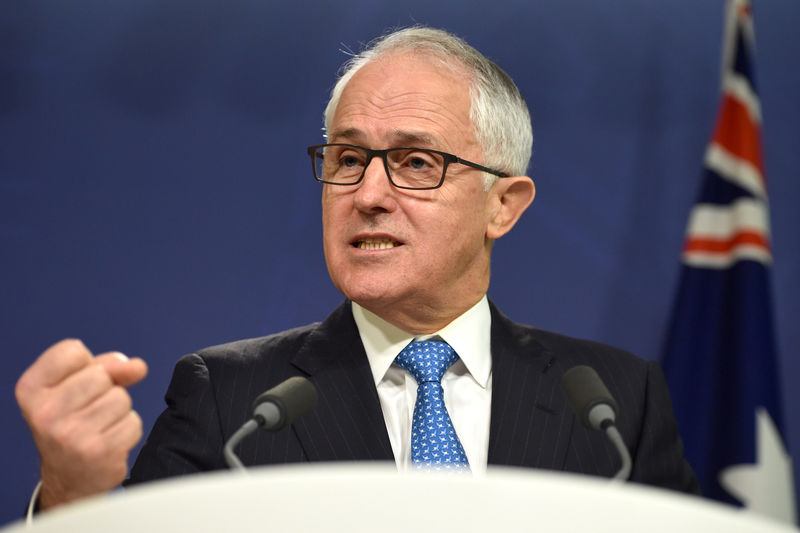* Current account deficit shrinks to A$3.9 bln on export boom
* Net exports add 0.2 ppt to Q4 GDP, govt spending about 0.3 ppt
* Q4 GDP seen growing around 0.7 pct, after shock fall in Q3
By Wayne Cole
SYDNEY, Feb 28 (Reuters) - Australia boasted the smallest current account deficit in 15 years last quarter as booming resource exports delivered a whopping turnaround of A$8 billion to the nation's finances, boosting company profits and economic growth.
The improvement should also lessen the risk of the country losing its triple A credit rating given ratings agency Standard & Poor's cited a reliance on foreign funding as one reason it might downgrade.
Tuesday's data from the Australian Bureau of Statistics showed the current account deficit shrank by two-thirds to A$3.9 billion ($2.99 billion) in the fourth quarter of last year.
The swing was driven mostly by rising prices for Australia's major resource exports including iron ore and coal which delivered a goods and services surplus of A$4.7 billion.
Scott Haslem, an economist at UBS reckons that, with prices for iron ore holding strong, Australia could actually record its first current account surplus since 1975 this quarter.
"The extent and duration of the spike of commodity prices, and subsequent material improvement of Australia's trade and external position, was largely unexpected," said Haslem.
He noted that when S&P warned about the credit rating, it had forecast a current account deficit of around 4 percent of GDP this year. Now it was more likely to be 1 percent.
Miners also shipped more product, helping add 0.2 percentage points to real economic growth in the fourth quarter.
A separate release on Tuesday showed government spending likely added 0.2 to 0.3 percentage points to growth, after being a drag the previous quarter.
As a result figures on gross domestic product (GDP) due on Wednesday are expected to show growth of 0.7 percent, bouncing from a shock 0.5 percent contraction in the third quarter.
Such an outcome would keep alive Australia's 25-year run without a technical recession - two consecutive negative readings for GDP - and on course to surpass the all-time record currently held by the Netherlands.
Annual growth would still only be a tepid 1.9 percent, with the economy barely expanding over the second half of the year, but the bonanza from exports will be a big boost to measures of national income and nominal growth.
The impact on incomes was highlighted in data out Monday showing company profits in Australia surged 20 percent in the fourth quarter, led by a near-50 percent jump for miners.
Andrew Hanlan, a senior economist at Westpac, estimates GDP in current dollars soared 2.7 percent in the quarter and lifted the annual pace to a five-year high of 5.5 percent.
That would be a boon for the conservative government of Malcolm Turnbull since it is nominal growth that drives tax revenues and it needs all the money it can get to plug a persistent budget deficit.
($1 = 1.3034 Australian dollars)
